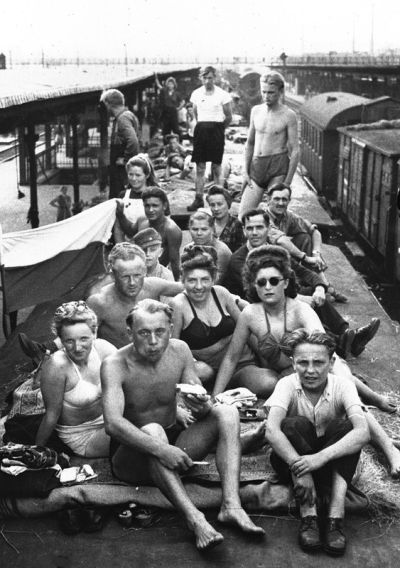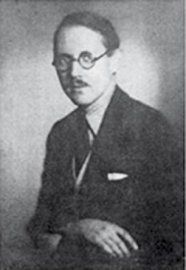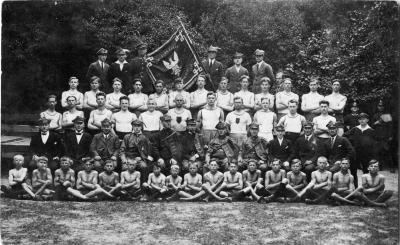Displaced Persons (DPs)

According to UNRRA statistics there were 922,088 Polish DPs registered in the Western zones in May 1945. Their numbers declined further following their return back home or further emigration to countries like the Netherlands, Belgium, the USA, Canada, Australia and Great Britain. In 1946 there were only 422,000, at the start of 1948 210,000, and in September 1949 when the Federal Republic of Germany was set up, only 113,000. According to IRO statistics there were 80,354 Polish GPs and Polish refugees living in the territory of the Federal Republic of Germany on 1st July 1950. Data gathered on 1st October 1951 even spoke of 120,000.
In 1951 the IRO handed over responsibility for displaced persons to the government of the Federal Republic of Germany, thereby ending the situation which had existed in 1945 at the end of the war. The first step taken by the German government was to close down the refugee camps and give this group of persons a legal status. On 25th April 1951 the German parliament passed a law concerning the legal position of “homeless foreigners” in the country. From now on DPs were treated like foreigners who were protected by German law. They were guaranteed religious freedom and the opportunity to set up private schools. Legally they were under the jurisdiction of German courts and duty-bound to respect the laws of the Federal Republic. Another important article in the new law stated that the German government was duty-bound not to expatriate any foreigner to countries where they would be in danger on the grounds of their political views. The German government guaranteed their care. Similar rights were given to, for example, political refugees from Poland who were henceforth able to apply for political asylum. Further waves of Polish immigrants benefited from the new law.
After 1945 the DPs set up many organisations. However because of the constant emigration of Poles from Germany and the huge amount of personal and political conflicts between the Polish exile government in London and the communist government in Poland these organisations were relatively weak and prone to divisions. At the start separate structures existed in each of the occupied zones (in 1945 in the British zone the organisation was known as the “Główna Komisja Porozumiewawcza Środowisk Polskich” / the Head Commission on Communicaton between Polish Circles; in the American zone as the „Zjednoczenie Polskie / the Polish Union”; and in the French zone as the “Powiatowe Ośrodki Polskie” / the Polish Urban Centre Circles). In 1946 the “Porta Polonica“Zjednoczenie Polskie w Niemczech” / the Polish Federation in Germany was created as an umbrella representative organisation for Polish DPs in their dealings with the occupational forces and aid organisations like UNRRA and IRO. Because of internal conflicts at the end of the 1940s the Polish Federation in Germany was replaced in 1951 by the “Zjednoczenie Polskich Uchodźców” / League of Polish Refugees (ZPU) whose headquarters were in Velbert. This organisation had an independent character, roughly 5000 members and was recognised by the Polish government in exile. Its first chairman was Janusz Zawalicz-Mowiński and its press organ was “Polak”, published in Quakenbrück. The League of Polish Refugees was divided into four areas known as circles, and each of these circles was further divided into other sub-circles (Ogniska). The organisations were mainly concerned with questions dealing with everyday existence (finding a job, legal aid, attempts to get compensation for forced labour and internment in concentration camps, the education system). The League of Polish Refugees also supported new emigrants from Poland although these people tend to weaken the organisation. In the 1960s and 1970s the organisation underwent a crisis and membership declined rapidly. When the work of the League of Polish Refugees finally came to an end in 1989 only a few sub-circles remained active, including some in Bavaria.
Other DP organisations included the League of Polish War Veterans and the Polish League of Former Political Prisoners in German Concentration Camps. Political parties also set up their own branches, like the “Polska Partia Socjalistyczna” / Polish Socialist Party (from 1946), the “Stronnictwo Ludowe „Wolność“ / Polish Farmer’s Party “Freedom” (from 1947), the “Polskie Stronnictwo Ludowe” / Polish Farmers party (supporters of Stanisław Mikołajczyk), the “Stronnictwo Narodowe” / National Party and the “Stronnictwo Pracy” / Workers Party. That said their membership was insignificant and they existed only on the fringe of the main wave of Polish activities in Germany.
Between 1945 and 1950 there were 260 private and secondary schools (15,700 students) in and around DP centres. They published around 400 journals and set up a huge amount of choirs, amateur theatre groups and orchestras. In the 1950s this number began to decline as the refugee camps were closed down and DPs began to move elsewhere or become more integrated into the community. As a result the influence of the “League of Polish Refugees”, which suffered internal conflicts also declined. These conflicts led to further fragmentation in the organisation in the late 1960s and 1970s.
Krzysztof Ruchniewicz, June 2014



